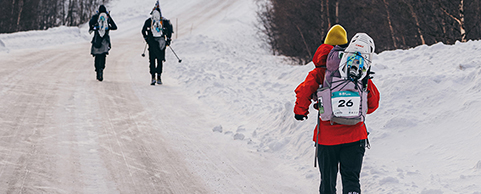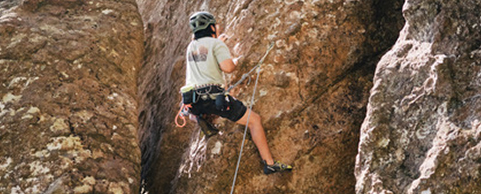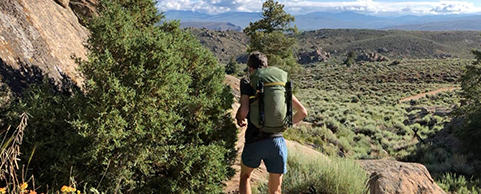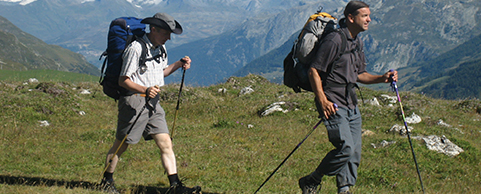Hiking Greenland's Arctic Circle Trail
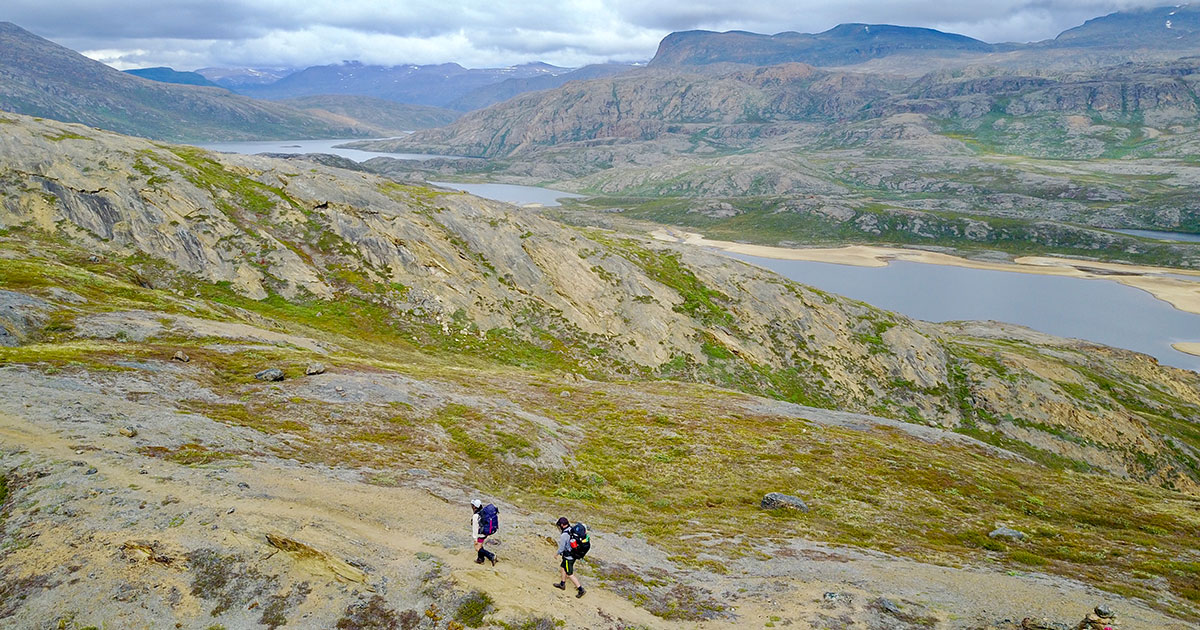
“Greenland is covered with ice and Iceland is very nice.” At least, that's what the D2: Mighty Ducks film taught an entire generation. Ever since this puzzling childhood revelation, I have been fascinated with Greenland.
Greenland has a whopping land size of 2.16 million square kilometres – most of which is covered in ice, snow and glaciers. Greenland's culture is 88% Inuit, or mixed Danish and Inuit, and the majority speak Greenlandish and Danish, with younger locals also learning English.
There are no roads or railway networks that connect the towns to each other. Travel between towns is done by plane, helicopter, boat, dog sled, snow mobile or on foot. To my surprise, Greenland offers many summer outdoor activities – hiking, camping, fishing, hunting, kayaking and sailing.
The Arctic Circle Trail
I spent the majority of my time in Greenland hiking the Arctic Circle Trail (ACT). The ACT runs 160km between the towns of Kangerlussuaq and Sisimiut and takes most hikers 9–11 days to complete.
The peak hiking season is in the warmer months from June to September. The popularity of the ACT is growing and it now sees about 2000 hikers per year. On my 9 days on the trail, I met fewer than 20 other people. Common wildlife seen on the trail are musk ox, arctic hare, arctic fox and reindeer/caribou.
You will need to be completely self-sufficient and will have to carry all your gear and food with you for the whole trail. No permits are required to hike the trail. Be prepared – adequate planning will go a long way.

Footwear for Greenland's Arctic Circle Trail
Anything from trail runners to waterproof boots would be suitable for the ACT. Stick with what you usually wear for multiday pack-carry hikes. Make sure your footwear fits well and is worn in.
My waterproof socks were an absolute must for this hike. Keeping your feet dry can be near impossible as there are a few river crossings and you can be walking kilometres through flooded marshlands.
Bring along a pair of sandals or thongs to use as camp shoes. Wearing them will give you the chance to air out your feet after a day of walking – it is a welcome luxury if you have been walking in wet shoes all day. Gaiters are not essential but can be useful to keep water out of your shoes or boots in the wet and flooded areas of the trail.
Clothing for the Arctic Circle Trail
In June and July, the sun does not set. It stays visible throughout the entire day and night. This phenomenon is called the midnight sun. Make sure you pack enough sunscreen, a sun hat and sunglasses.
Mosquitoes and midges (small black flies) plague the trail in June and July, so a head net and repellent are essential. Loose fitting clothing that covers most of your skin also helps (shirts like the Craghoppers Adventure II Shirt are treated with NOSILIFE anti-insect treatment to further repel bitey insects). There is nothing more unsettling than the sound of a huge swarm of mosquitoes buzzing around you. I found the midges more annoying than the mosquitoes when I didn’t have my head net on, because they would try to get into my nose and eyes.
I made the mistake of hiking in my tights on the first day and had at least 30+ mosquito bites on my legs by the end of the day. Of course, I had not packed any other pants – apart from my rain pants! So for the rest of my time in Greenland I wore my rain pants pretty much everywhere. Luckily the mosquitoes in Greenland do not carry any diseases; they are just more of an annoyance. As soon as there is a breeze, the swarms will blow away; so they are only particularly menacing when the air is still.
 |
|
|
Sleep and Shelter
A 3-season sleeping bag rated for temperatures to at least -5°C is recommended, because freezing nights are not uncommon. A down-filled sleeping bag is preferable, because they have a superior warmth-to-weight ratio to synthetic-fill sleeping bags. Down sleeping bags are lighter, warmer and more compact than a synthetic bag. (If you want to read more about this, check out our Down vs Synthetic Sleeping Bags blog article.) For the ultralight enthusiast, I would recommend the Mont Helium 450 or 600 and those who are more budget conscious the Mont Zodiac 500 or 700.
It is equally important to pair your sleeping bag with an insulated sleeping mat to keep you toasty warm on those chilly nights. My recommendations are the Exped Synmat UL M for its comfort, small packed size and weight, or the Exped Synmat M if you are after a more robust mat.
There are about 10 simple huts along the trail, though we chose to sleep in the comfort of our tents. It is highly recommended that you pack a tent in case the huts are full or if you need to take emergency shelter. A lightweight 3-season tent such as the Mont Moondance I or II will serve you well on the ACT and other trips.
Water on the Arctic Circle Trail
There are plenty of freshwater lakes, streams and springs to retrieve water from along the trail. You are never more than a few hours from a water source. You are in a very remote location amongst a lot of untouched wilderness, so the risk of contamination in the water is very low. The water is crystal clear and cold – we did not treat any of our water but did bring along Katadyn Micropur water purification tablets just in case.
To carry my water, I used a 3L Camelbak bladder to sip on while walking and a 2L Platypus collapsible bottle to drink from while at camp. This system worked well for me since the 2L bottle could be rolled up (to save space) when I did not need it. Most of the time I did not carry more than 2L of water on me.
Food for the Arctic Circle Trail
I carried enough food for 11–12 days on the trail – more than we needed, in case we got delayed due to bad weather or injury. Breakfast consisted of muesli or porridge; lunch was musk ox salami (which we purchased at the airport) with Danish rye bread called Rugbrød. All our dinners were Backcountry Cuisine or Outdoor Gourmet freeze-dried meals – which we carried from Australia and through most of Scandinavia before heading to Greenland. For snacks we had a mixture of scroggin, chocolate and muesli bars.
We supplemented the food we carried with foraged berries (black crowberry) and mushrooms. We had a fishing hand reel with us, but did not have any luck (or patience) for catching any arctic char along the trail.
For a stove, we used the lightweight MSR Pocket Rocket. Finding gas canisters in Greenland that fit the typical hiking stove can be problematic. Many hikers had purchased the incorrect type of canister, rendering their stove useless and putting up with cold dinners and no hot coffee along the trail. Before you leave town, ensure your stove works with the fuel that you have purchased!

Navigation and Safety
For me, a personal locator beacon (PLB) is an essential piece of kit for any outdoor adventure. There is no mobile phone coverage on the trail so a PLB or other satellite communication device is absolutely necessary. In 2016, a solo hiker went missing on the trail, and in summer wild fires can ravage the area.
A lot of the trail is fairly well marked with large rock cairns painted with a red halfmoon (a homage to the Greenlandic flag) and route-finding overall is not too difficult. There are 3 maps that cover the whole trail – Kangerlussuaq, Pingu and Sisimiut. I could not source the maps prior to arriving in Greenland, and when we arrived at the airport they only had one of the maps still available. I had a copy of the Cicerone Trekking in Greenland guidebook, which was great for trip planning and to read along the trail. I also highly recommend downloading gpx files of the trail onto your phone or GPS device.
 |
|
Icebergs from Illulisat Icefjord. |
Gear for Greenland's Arctic Circle Trail
Below is a gear list of all the things I took (or should have taken) along with me on the trail.
Clothing for the Arctic Circle Trail
- Waterproof jacket and pants
- Hiking pants
- Shorts
- Long-sleeve hiking shirt
- T-shirt
- Midweight fleece or lightweight insulated jacket
- Thermal top and bottom
- Underwear
- Waterproof socks, e.g. Bridgedale Storm Socks
- Midweight socks: one for hiking, one for sleeping
- Hiking boots/shoes
- Sandals
- Gaiters, e.g. Outdoor Research Crocodile Gaiters
- Hat
- Beanie
- Lightweight gloves
- Buff
- Mosquito head net
- Sunglasses, e.g. Julbo
- Swimmers
Sleep and Shelter
- Sleeping bag (rated to at least -5°C), e.g. Mont Helium 450 or 600, Mont Zodiac 500 or 700
- Sleeping mat, e.g. Exped Synmat UL M, Exped Synmat M
- Tent or other shelter, e.g. Mont Moondance I or II
Kitchen and drink
- Stove and fuel
- Pots and cutlery
- Lighter and waterproof matches
- 3L camelback bladder
- 2L Platypus soft bottle
- Water purification method, e.g. Katadyn Micropur tablets
- Food and snacks
Safety
- Personal locator beacon (PLB)
- First aid kit
- Repair kit
- Multi-tool or pocket knife, e.g. Leatherman or Victorinox
- Maps and guidebook: Cicerone Trekking in Greenland
- Global or northern hemisphere compass
Other Gear
- 50L+ hiking pack
- Pack liner and pack cover
- Trekking poles
- Head torch
- Toiletries
- Insect repellent
- Trowel, e.g. Helinox Deuce of Spades
- Toilet paper, hand sanitiser
- Towel
- Phone, battery pack, solar panel
- Trash bag – pack it in, pack it out!
- Fishing gear, such as a hand reel

Tamara Pham, See our range of hiking boots. Questions? Visit us, email us or call us (03 9600 0599). More Articles
Questions?
© 2024 Bogong Equipment Pty Ltd, Melbourne, Australia.

|













